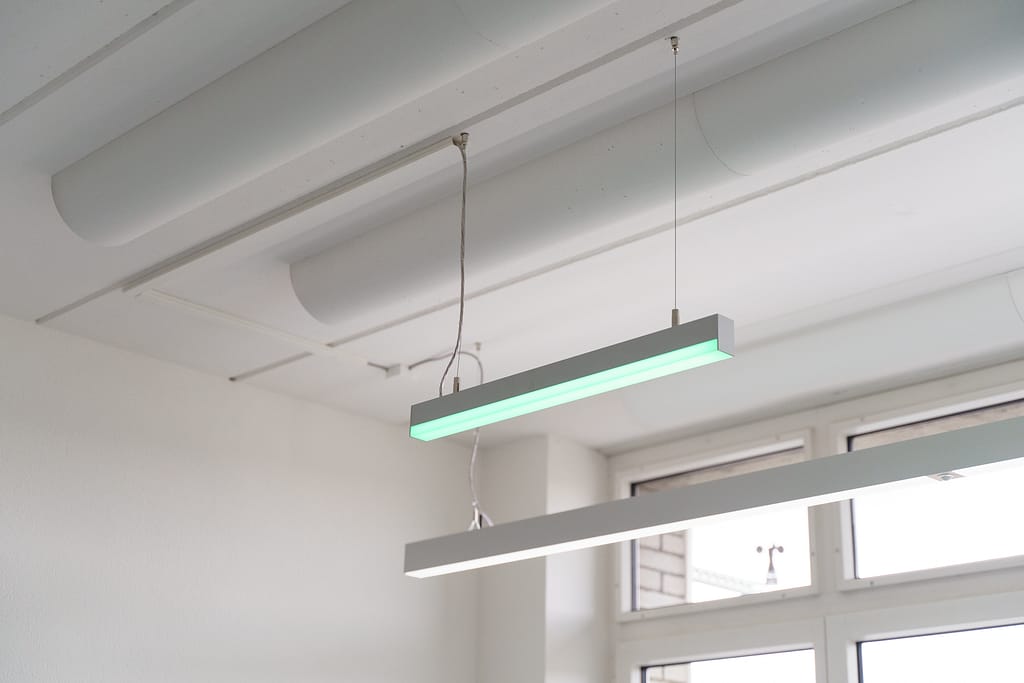Astra LED GmbH
More than just perfect lighting

Smart and modern buildings provide comfort, safety and energy efficiency. But this requires systematic embedding of new technologies in a new overarching system. The Smart Office project in Smart City Lab Basel’s community space was started to provide new insights on overarching connectivity of new technologies across buildings and sites. The aim is to create a landscape which manages and governs IoT and IT data with a simple set-up and promotes intelligence and the autonomy of individual systems. Astra LED’s lighting is one of multiple use cases for this project.
Astra LED’s “plug-and-play” lighting offers optimal room comfort with intelligent cable control and battery-free lighting control. Integrated room sensors autonomously control brightness and colour temperature and adjust them to natural lighting conditions. Integrated motion detectors detect people and switch on lights only when they are actually needed. This keeps lighting levels in the room constant at all times while minimising energy consumption. In addition to lighting conditions, Astra LED room sensors can also be used to measure air quality in closed rooms. If the air content of CO2 and volatile substances (VOCs) increases, the light emitted by a dedicated lamp changes colour to indicate that the room needs airing. All lights and sensors are connected with each other. With the integrated LoRa-Gateway, the data can be transferred to a building automation system or data can be exchanged with such systems.

About Astra LED GmbH
Astra LED provides integrated and adaptive lighting solutions that enhance well-being, greatly reduce operating and maintenance costs and safeguard long-term investments. Astra LED’s customers receive creative and technical lighting systems from a single source that are integrated aesthetically into the architecture or even make use of existing lighting units. Integration into building systems means that working conditions can be optimised (thanks to situational lighting control), operating costs can be significantly reduced and maintenance requirements minimised. This helps to safeguard investments for the long term and, by making continued use of existing architectural features, also gives a new lease of life to past investments.